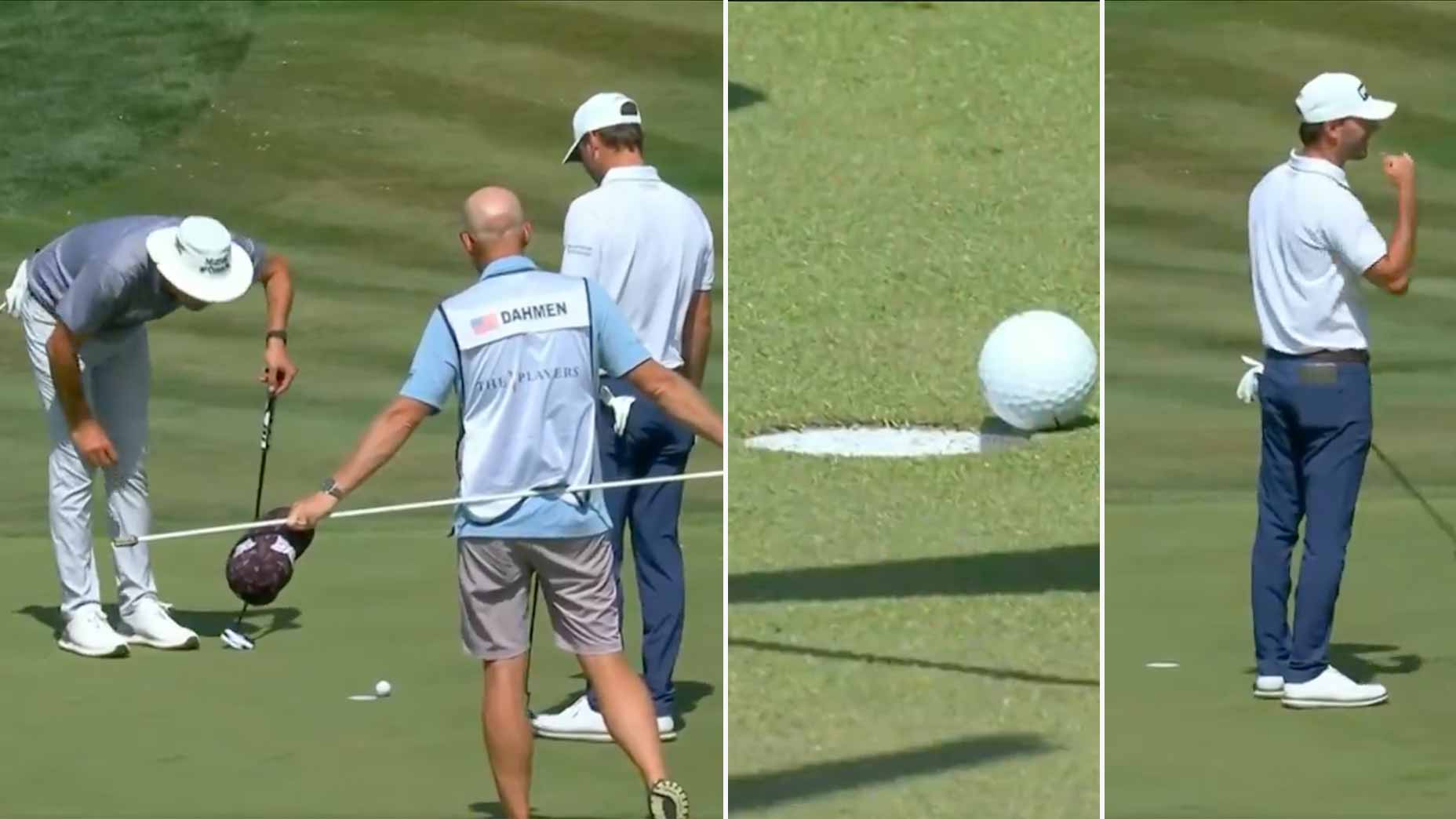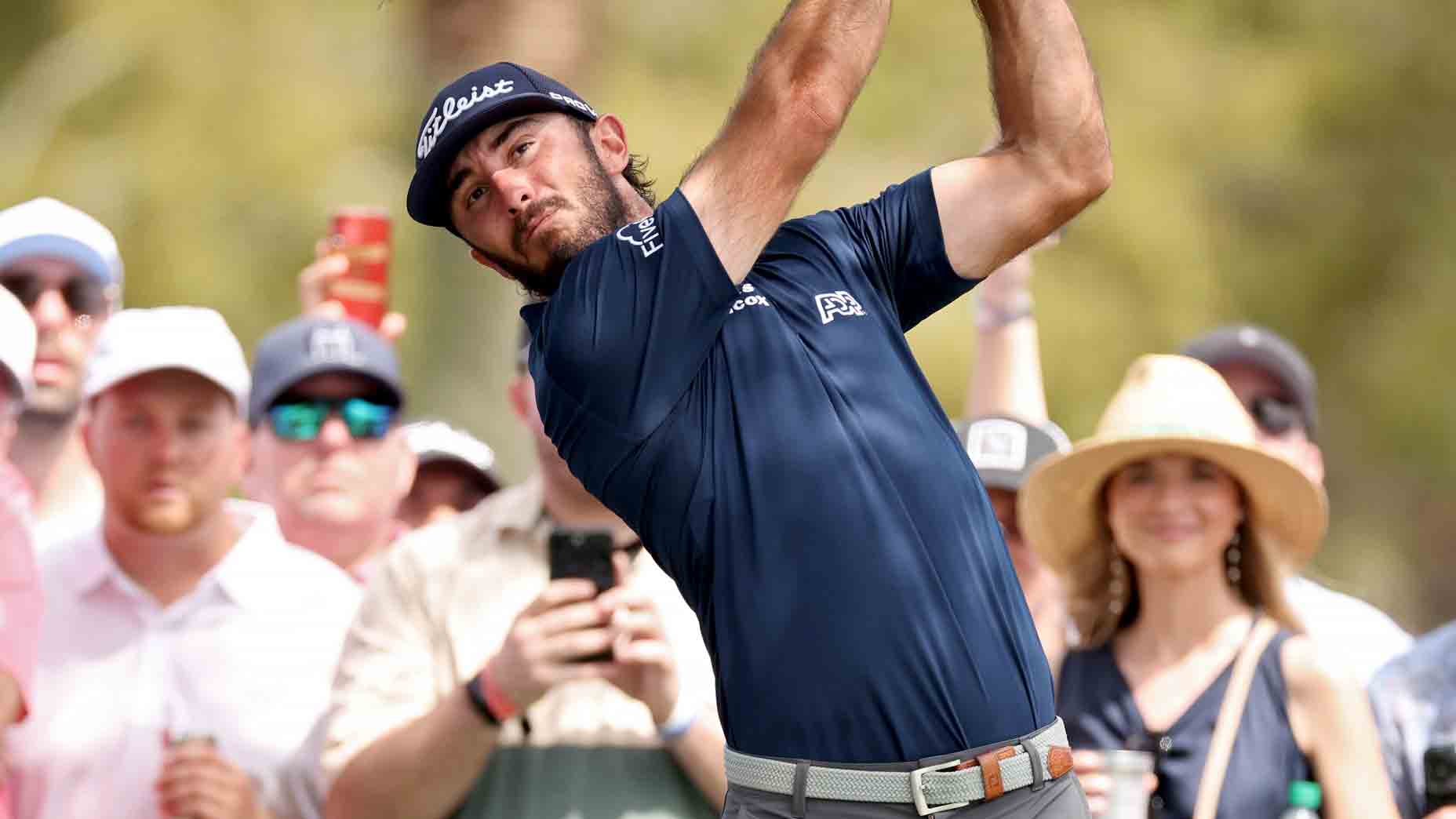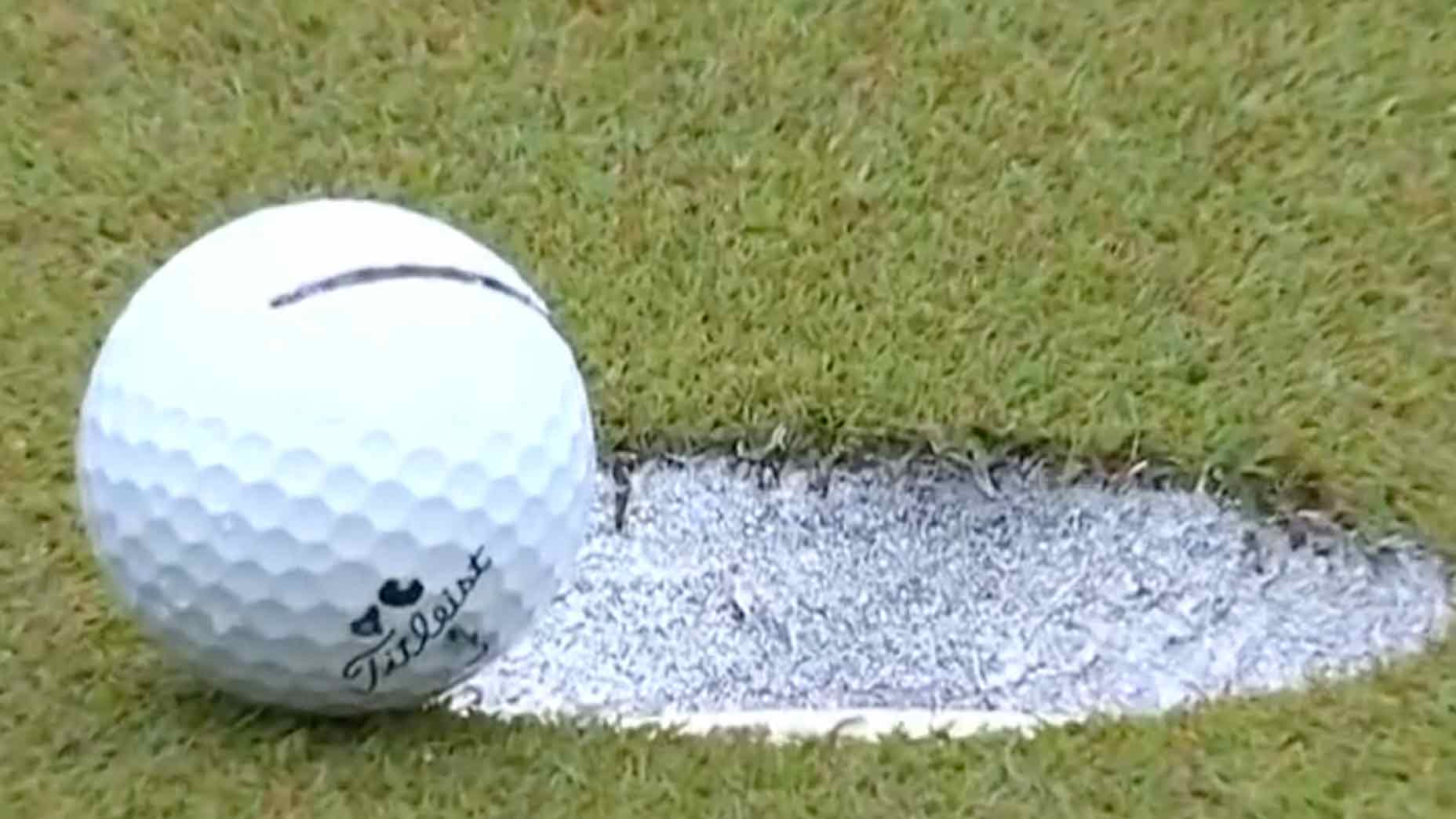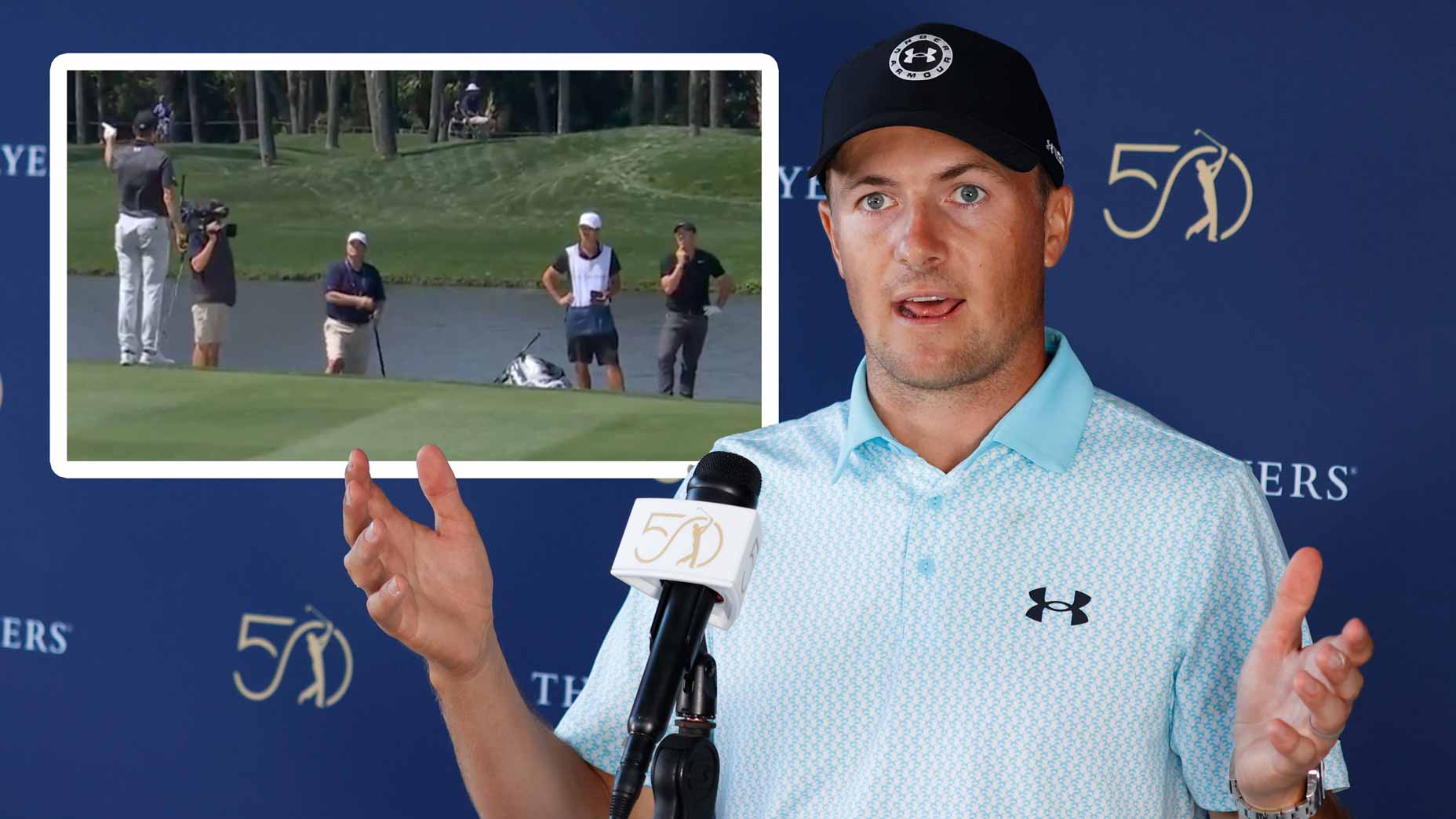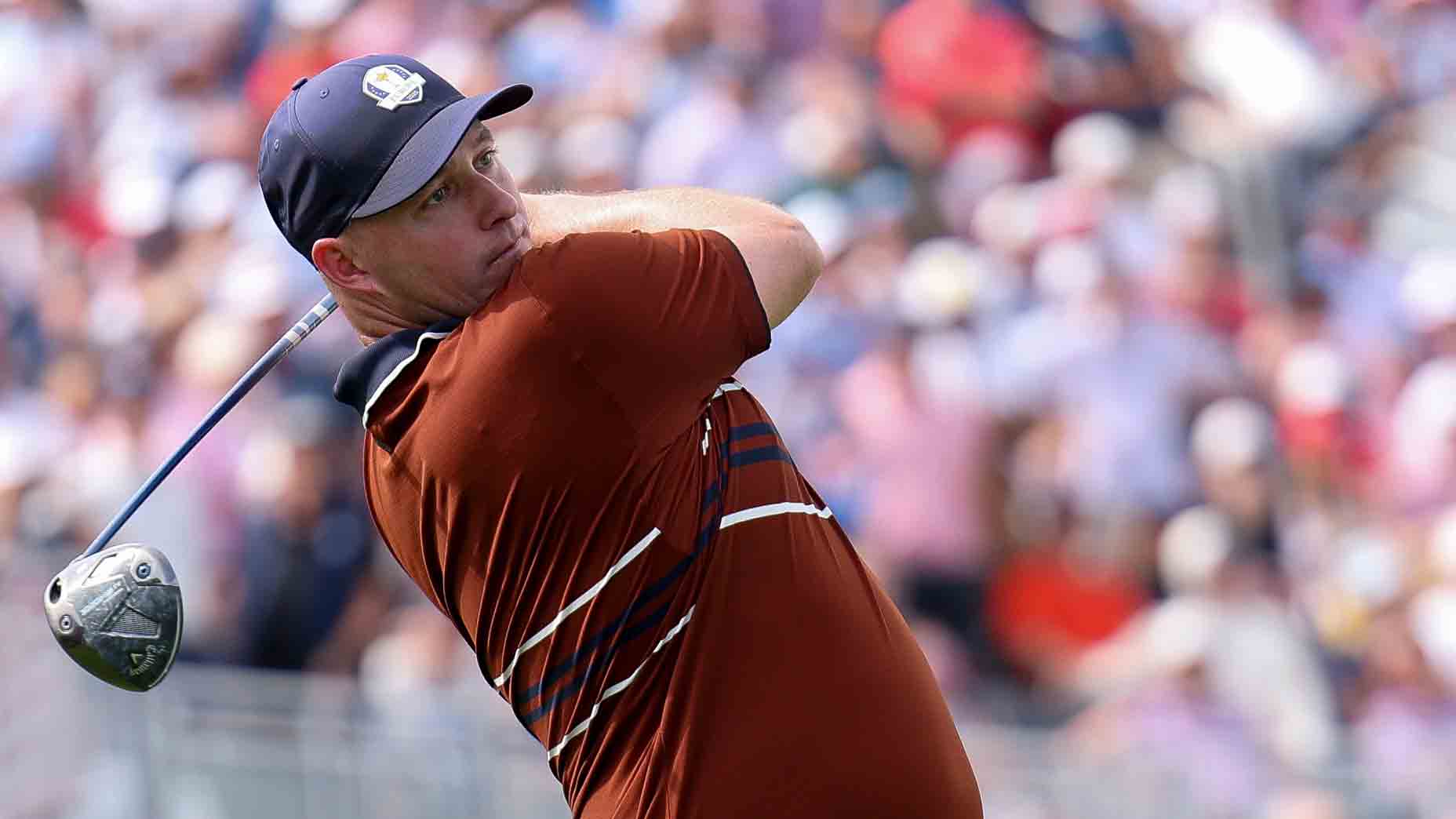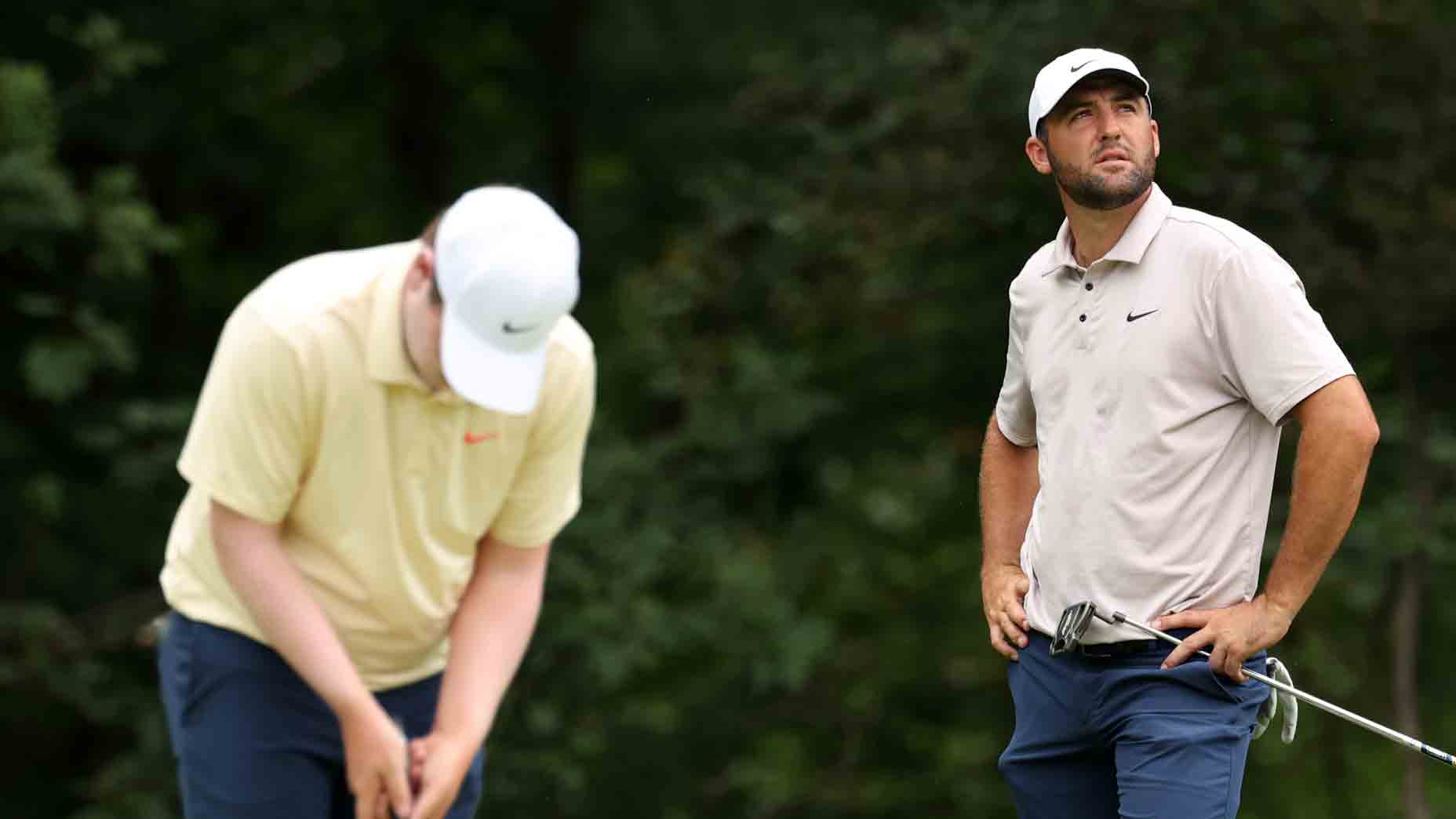Austin Eckroat cozied his birdie putt on the 11th green at TPC Sawgrass right behind the cup.
And that’s where the fun began Sunday at the Players Championship.
Eckroat, the winner of the Cognizant Classic two weeks ago, is used to delays — his win down I-95 at PGA National came on a Monday after weather plagued the final round — but this might be his first experience with a delayed shot.
The sophomore PGA Tour pro started the final round at the Stadium Course in a respectable tie for 17th at eight under, but he was not having the Sunday he intended. He bogeyed both par 3s on the front nine and then played ping pong around the par-5 9th green to record a double to go out in 40.
He seemed to be wasting another opportunity at the par-5 11th when his chip from left of the green ran 21 feet by the hole.
But Eckroat put what looked to be a perfect roll on the ball as it started tracking toward the hole. His playing partner, Joel Dahmen, raised his putter in anticipation.
The ball caught the right lip, swung around behind the cup, and stopped, seemingly defying gravity and all known laws of physics.
Austin Eckroat will get a one-shot penalty for this putt.
— Jack Hirsh (@JR_HIRSHey) March 17, 2024
The Rules of Golf are truly bonkers pic.twitter.com/TFovpFtBN1
This is when the Rules of Golf come into play as the ball seemed to have a good bit of mass overhanging the lip of the cup, making it likely to drop … eventually. Rule 13.3a reads, “if any part of a player’s ball overhangs the lip of the hole: the player is allowed a reasonable time to reach the hole and ten more seconds to wait to see whether the ball will fall into the hole.”
Eckroat didn’t dawdle, but he didn’t hustle to the hole either. But once he arrived, both he and Dahmen began squatting around the hole to see whether or not the ball would drop.
The viral video of Max Homa hitting at fans? Here’s what happenedBy: Nick Piastowski
“You get 10 seconds, and now you start counting,” NBC analyst Brad Faxon said as the players got near the cup.
“Everybody looking down,” host Mike Tirico added. “Is it moving? Are you moving? Are you going? It looks like it’s leaning.”
Tirico was right. You could tell the ball was going to fall. The problem was the rules. By that point, Eckroat had already been standing by the cup for nearly 20 seconds, double the allotted time allowed.
Five more seconds pass and Tirico calls in PGA Tour Lead TV rules and Video Analyst Mark Dusbabek, but before he can get a word in, the ball drops.
“So Dus, now it falls in, but what about the time,” Tirico asked.
Dusbabek had bad news for Eckroat fans.
“That is over 10 seconds,” Dusbabek confirms. “You’re allowed a reasonable amount of time to get to the hole and then an additional 10 seconds from that point. If the ball falls in during that 10 seconds, it was holed by his last stroke. In this case, it fell after the 10 seconds, so you count it as holed, but you add one penalty stroke.”
His unlikely birdie 4 became an unfortunate par 5, despite only hitting the ball four times. Had he not waited and hit the ball anyway, he would have recorded the same score.
Pro hit with painful rules violation after he thought he made parBy: Josh Berhow
A similar penalty was accessed last year to Lee Hodges after his ball took 34 seconds to fall at the PGA Championship.
Here’s how it looked on ShotLink:
Shot 1: 297 yds to left fairway, 231 yds to hole
Shot 2: 223 yds to left fairway, 89 ft 0 in. to hole
Shot 3: 37 yds to green, 20 ft 8 in. to hole
Shot 4: Putt 20 ft 10 in., 1 in. to hole
Shot 5: Penalty.
Yes, the penalty comes after the ball was holed.
How Jordan Spieth viewed Rory McIlroy’s ‘really tricky’ dropsBy: Jack Hirsh
Dusbabek went on to explain how the penalty was determined in real-time.
“It was a reasonable amount of time for him to get there, you can’t delay your walk up there,” he said.
That’s when Tirico asked him to clarify about delaying his walk to the hole.
“We seen people do it all the time,” Tirico said.
During the 2017 PGA Championship, Justin Thomas famously hit a putt that hung on the high lip and Thomas walked away from the cup before the putt eventually dropped. He went on to win his first major that day. The ball appeared to still be moving much of the time and didn’t take nearly as long as Eckroat’s did Sunday.
“We have to use our judgment on that. So you couldn’t walk around the whole green and make a decision,” Dusbabek said.
“There’s nothing like the Rules of Golf,” Tirico quipped. “‘Reasonable,’ you figure it out.”
